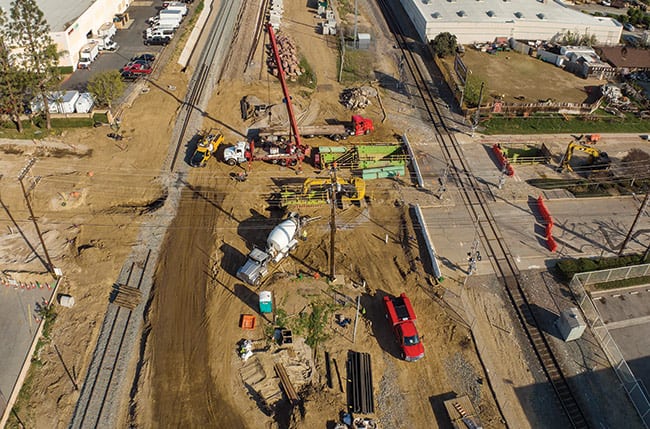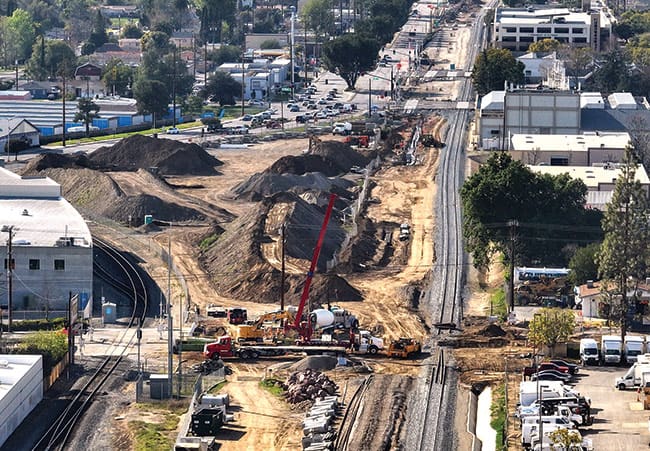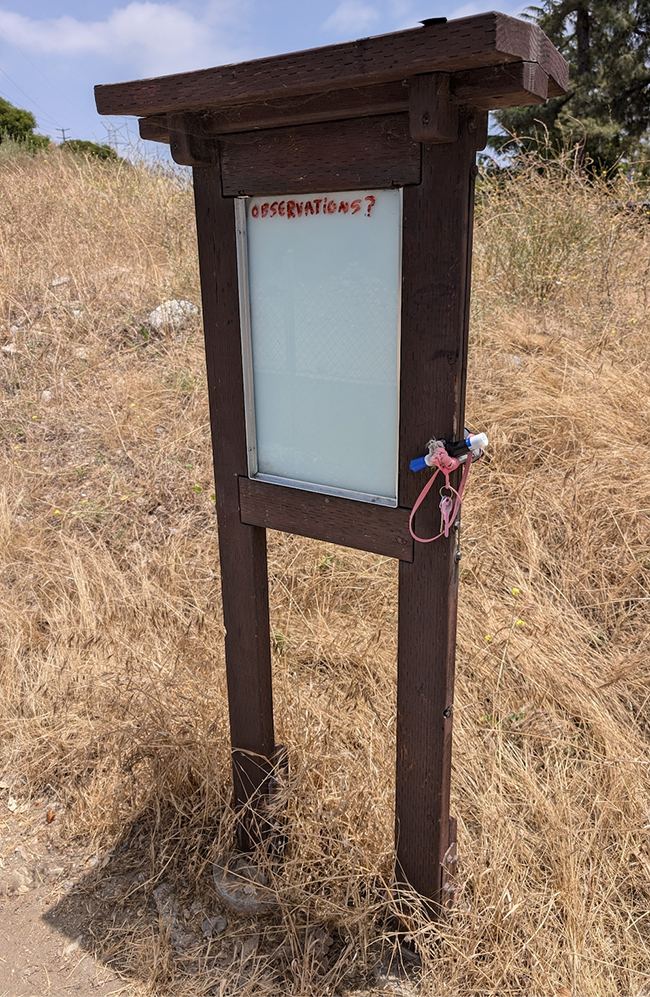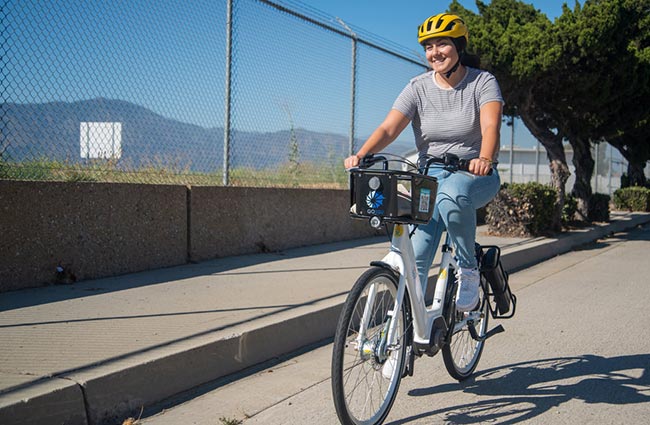Claremont asks state to fund Gold Line to Montclair

by Steven Felschundneff | steven@claremont-courier.com
The City of Claremont has crafted a letter to Sacramento asking for a piece of the state’s recent budget surplus to fund the long anticipated, but elusive, extension of light rail service through our city ending in Montclair.
City officials in Montclair, along with the Foothill Gold Line Construction Authority board, also asked Governor Gavin Newsom and state lawmakers for $748 million to build the final portion of the rail line from the Pomona North station through the Montclair Transit Center. Letters of support have been generated by cities along the Gold Line corridor.
“We have quite a few letters, a couple dozen, that have been submitted by cities and stakeholders throughout the corridor that have gone to the governor and the state legislature supporting the request for the $748 million,” Chief Communications and Strategic Development Officer Lisa Levy Buch said.
The 12.3-mile Gold Line extension, now called the L Line, was originally scheduled to connect the line’s current terminus in Azusa through Glendora, San Dimas, La Verne, Pomona and Claremont, ending in Montclair. In 2018, when construction bids came in “hundreds of millions of dollars above the amount of funding secured,” the decision was made to end the line at Pomona North, which is near the intersection of Bonita and Garey avenues.
In August 2019, the construction authority awarded an $805.6 million contract to Kiewit-Parsons for the first nine miles of the extension, with a two-year option to complete the full 12.3 miles. However, funding from the state was not secured by the October 2021 deadline, and the option to complete the project for $540 million expired.
Since then, they have asked the developer to recalculate the construction cost to Montclair and provide another contract extension until October 2022. Armed with the new cost information, the construction authority has asked State Senator Anthony Portantino and Assemblyman Chris Holden to advocate for the project in this year’s budget, which will be hammered out between now and the end of June.
For now, the funding is tied up in Sacramento competing for Governor Newsom’s attention with high-speed rail and dozens of other transportation projects statewide that are poised to take a portion of billions of dollars set aside for infrastructure.
“So we are just one piece of this overall big discussion. It’s pretty high stakes, there are tens of billions of dollars that are going to be allocated through this process but we think we stand a very good chance,” Gold Line Construction Authority CEO Habib Balian said. “It’s a worthy project, it’s shovel ready. We have the engineering done. We have completed the environmental work. There is probably not another project on the list of infrastructure projects that is going to cross the governor’s desk in the next several months that is as ready to go as this one.”
Claremont’s letter signed by Mayor Pro Tem Ed Reece highlights the benefits of completing the rail line including increased transit options for residents and visitors as well as positive environmental impacts.
“The Foothill Gold Line light rail project has strong support at every level (community, local, state and federal) and its benefits to the region are significant. However, completing the currently unfunded final three-mile, two-station project segment to Claremont and Montclair is critical to realizing the majority of environmental and mobility benefits of the project overall,” said Mayor Pro Tem Reece, who is also the chair of the Gold Line Authority board.
Completing the final roughly 3.5 mile segment is expected to generate 7,700 weekday boardings, more than half of the six-station extensions total ridership, according to the letter. Trips from these two stations are projected to replace 26.7 million vehicle miles traveled annually, eliminating millions of tons of carbon dioxide emitted into the local atmosphere.
“There are huge environmental rewards in getting this to Montclair,” Mayor Pro Tem Reece said. “We are looking at almost 15,000 car trips a day eliminated. That equates to about 85,000 miles a day. The beauty about this, add it up over a year, that’s almost 46 million vehicle miles traveled that are eliminated because of the Gold Line getting to Montclair.”
Since the Gold Line’s inception, approximately 19,200 housing units have been built around rail stations and another 17,000 are planned. More than 10,000 of the proposed units are near the Claremont and Montclair stations.
Specifically for Claremont, the South Village project currently working its way through the commission process would be the first transit oriented development in the city. These types of developments combine close proximity to public transit with the potential creation of new employment as a way to reduce dependence on driving a car. The concept definitely has its detractors, who say adding hundreds of new housing units, dozens of retail storefronts and live work spaces, while also reducing parking, will create traffic headaches and defies Claremont’s small town image.
Still many people, including affordable housing advocates, say it is the way of the future and that Claremont has an obligation to create hundreds of new units under its share of the Regional Housing Needs Assessment. That said, without the Gold Line, the South Village project might best be described as a TOD in name only.
“I think the overall success of the South Village plan is based on the Gold Line coming through. It’s going to bring visitors to dine and experience the amenities of South Village, but also allow those that live there the opportunity to work and live right next to transit. To be able to jump on Gold Line and get to work and not have to take that vehicle, or not having to own a vehicle is potentially possible,” Mayor Pro Tem Reece said.
Mayor Pro Tem Reece believes this project represents a big portion of the city’s responsibility to provide additional modes of transportation, particularly for residents who do not have personal transportation, or may not be able to drive.
“Quite frankly, the more transit the better. We need to provide light rail to Montclair through the Gold Line, we need to provide more busing opportunities, we need to provide all the transit opportunities that we can so that we can start taking vehicles off the street,” he said.
He sees the Gold Line as a potential driver of economic growth in Claremont by giving visitors along the entire Metro light rail system an easy way to get here without bringing a car.
“Not only does this project create jobs during the construction phase but once its built it helps to add economic opportunity around the stations around the corridor and in turn helps to create jobs in those cities and neighborhoods,” he said.










0 Comments